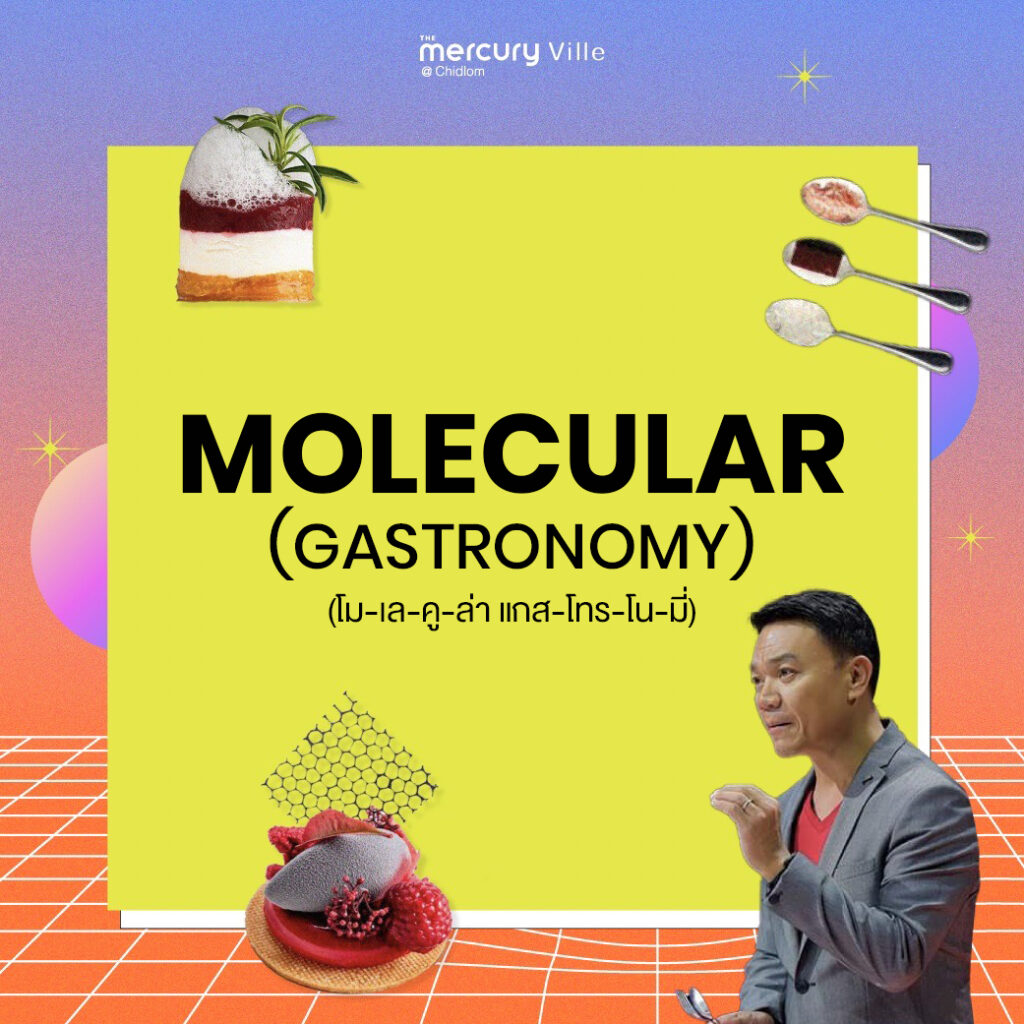


Fans of cooking competitions may have heard some foreign language terms during the show and some may have had mixed reactions bouncing between confusion and understanding back and forth. When encountering numerous foreign words and concepts that do not have concise translations in Thai language and it is not the fault of the chefs or contestants who use English words while explaining in Thai. Today, we’d like to recommend five basic foreign language terms that food lovers should not miss.


Molecular Gastronomy
The word “Molecular” is an adjective form of the word “Molecule”, which is defined as the smallest part of a substance. When combined with the word “Gastronomy”, which refers to the art or science of food and its consumption, it describes a style of food presentation or cooking that plays with scientific principles and techniques. This is used to enhance the experience and expand the imaginative world of food ingredient management. Examples of this include the use of liquid nitrogen, which has a temperature of -195.79 degrees Celsius, to quickly make solid food, or the technique of Sous Vide cooking.


Sous Vide
Anyone who has watched cooking competition shows is probably familiar with this term to some extent, because Sous Vide is a modern cooking technique that has become very popular among chefs and food critics around the world. To put it briefly, Sous Vide involves cooking raw ingredients (usually meat) slowly and precisely at a set temperature using a Sous Vide machine, resulting in evenly cooked, juicy, and flavorful meat that retains all the nutrients.


Confit
French food lovers are probably well acquainted with this type of dish on the menu, such as the famous Duck Confit. The word “Confit” comes from the French verb “Confire”, which means to preserve food. That is the essence of this cooking technique, which involves simmering a relatively tough cut of meat in oil at a low temperature (around 70-90 degrees Celsius) for a long time, resulting in tender, juicy meat with well-preserved collagen and moisture.


Amuse Bouche
It wouldn’t be entirely accurate to simply call it an appetizer because the cultural context of each country’s cuisine differs. However, Amuse Bouche refers to small bites of food served before the main course in French cuisine. It is different from the commonly used term, Hors-d’oeuvre. The Amuse Bouche is a selection of bites chosen by the chef of the restaurant to serve to guests without them having to order it. It is meant to stimulate the taste buds and add a sense of enjoyment to the dining experience ahead, just like how the word Amuse, which means “exciting and enjoyable”, suggests.


Al Dente
This word is quite important to understand because whether you’re making a simple dish like instant noodles or a luxurious pasta dish, Al Dente is the term used to describe the texture of various types of pasta. Although the word originated from Italian, it is commonly used in the context of pasta dishes. The word “Dent” is the root word of “teeth” (as in Dentist, for example). Al Dente is defined briefly as a texture that is ‘firm to the bite’, not too hard or too soft. The technique for cooking pasta to achieve this desired texture may differ depending on the type of pasta. Don’t forget to look up more information for additional details!



